
I can’t say I’m overcome with excitement for Call of Duty: WWII just yet. Some degree of that is definitely series fatigue—though I do think Activision has made the right call in returning to historical warfare over the modern and near future morass of the last several Call of Dutys. The best Call of Duty games (for my money) are still the original Call of Duty and Call of Duty 2, which both portrayed the era of spitfires, fireside chats, and setting fire to Nazis. The problem is that this new one seems set to retread the same ground that every World War II shooter released since Saving Private Ryan and Band of Brothers has beaten into the sand on Omaha Beach. And there comes a point where I just can’t get excited to storm into Normandy with Able Company again.
Not only do these tales tend to overemphasize the heroics of a single nation, the United States, they ignore the breadth and depth inherent in what was truly a World War. There was so much more to World War II than the Western Front and the Pacific. There was fighting in the jungles, in the deserts, and in the frigid taiga. There were entire battles—dozens!—that didn’t involve American troops. It’s probably too late to change direction on the single-player campaign for the next, big Call of Duty spectacle. But it would behoove anyone looking to make a great single player World War II campaign (or some quality DLC) to consider including some of the following battles, which represent facets of an extremely complex conflict that we don’t often see.
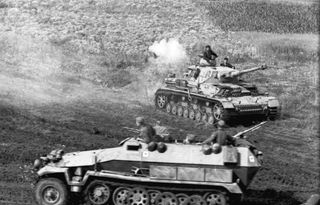
The Battle of Kursk
The lowdown: July, 1943. The Germans and the Soviets clash near the Russian town of Kursk in what is often regarded as the largest tank battle in human history.
Why it’s interesting: In addition to exploring a theater under-explored in shooters, the Ostfront, Kursk represents an armored engagement on an unparalleled scale. Around 10,000 tanks participated in the battle as the Germans tried to cut off a large group of Soviet forces that were overextended from the main line. Soviet T-34s clashed with German Panzer IVs and other iconic tanks of the conflict, with the Soviets ultimately achieving victory and significantly curtailing Germany’s ability to execute offensive operations for the first time. There has never been a clash quite like it since, and leading an armored charge or counter-charge on a battlefield sporting more tanks than there are shooter levels based on D-Day would make for quite a scene.
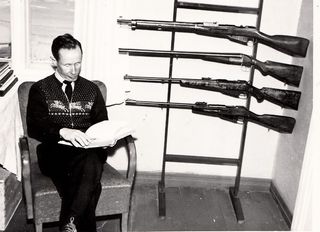
Simo Häyhä and the Winter War
The lowdown: December, 1939. The Soviet Union, one of the world’s major superpowers, attempts to invade tiny Finland, a nation of less that four million people, in the dead of winter. One man stands ready to become their worst nightmare.
Why it’s interesting: Finnish sniper Simo Häyhä would make a fantastic shooter protagonist, because he’s about as close to a shooter protagonist as has ever existed in real life. Across the 105 days of what would be called the Winter War, Simo racked up over 500 kills and earned the nickname “The White Death” from his Soviet opponents. He also survived getting shot in the head by a high explosive incendiary round that literally blew off half of his face (he would die peacefully, at age 96, in 2002). Finland was ultimately forced to cede some territory in the Treaty of Moscow, but the conflict is largely looked back on as a demonstration of the Soviet Union’s inability to enforce its demands on the much smaller nation when, on paper, it should have been a slaughter. It doesn’t get much more dramatic than that.
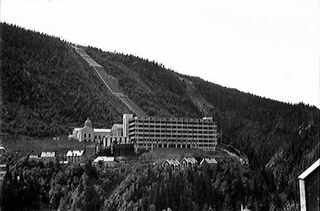
The Norwegian Heavy Water Sabotage
The lowdown: February, 1943. In Nazi-occupied Norway, a facility designed to produce material the Germans needed to build atomic bombs is the target of an unsuccessful raid by paratroopers from the British Special Operations Executive. One team of Norwegian commandos stands ready to air drop back into their homeland and keep Hitler from getting nukes.
PC Gamer Newsletter
Sign up to get the best content of the week, and great gaming deals, as picked by the editors.
Why it’s interesting: Norway’s role in World War II doesn’t get much press, even though they held out the longest of any nation to be invaded and later occupied by the Nazis—even longer than France. The Heavy Water Sabotage is one of the most significant instances of a commando raid in the early 20th Century and would look right at home in an 80s action movie—and presents an ideal set-up for a Call of Duty mission, for that matter. Had the operation been unsuccessful, the Nazis may have been one step closer to planting a mushroom cloud on London.

The rise of the Viet Minh
The lowdown: 1944. Japan has conquered the formerly French-held colonies of Southeast Asia, and are attempting to assert control over the area. When a great famine strikes the region, the underground communist army known as the Viet Minh conducts guerrilla raids on the Japanese occupiers and their Vietnamese collaborators.
Why it’s interesting: You can read 100 great books on World War II and never hear more than a passing mention of what was going on in Southeast Asia—even though it was a hotbed of conflict that would have huge ramifications for the rest of the 20th Century. Ho Chi Minh and his revolutionaries were fighting against both Japan and Vietnam's former French overlords with the goal of creating a united Vietnam under communist principles. They pioneered some of the same sorts of tactics that would be used by the Viet Cong in the Vietnam War, and by many other guerilla groups that came after. Plus, it gets us out of the general European region and reminds us that this was a global conflict.
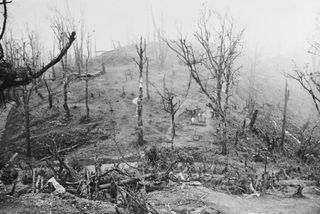
The Burma Campaign
The lowdown: 1942. Japanese forces attempt to assault the British-controlled Indian Subcontinent from the East, through Burma. Had they been successful, the global balance of power could have shifted drastically in the Axis’ favor.
Why it’s interesting: Staying in the unsung Southeast Asian theater, fighting in and around Burma persisted from 1942 right up until the end of the war in 1945. Japan and its allies in Thailand fought against troops from the British Empire, including native Burman and Indian defenders and the legendary Nepalese Gurkhas, with support from China and the United States. The climate and terrain were drastically different from what you’re used to seeing in games and films portraying World War II, with much of the fighting taking place across monsoon-drenched areas with no modern infrastructure to support mechanized warfare.
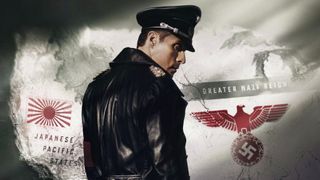
The German Invasion of the United States?
The Lowdown: United States Eastern Seaboard, 1945. German forces come ashore at Virginia Beach and begin a two-year process of conquering America to cement their world domination.
Why It’s Interesting: OK, so this didn’t actually happen. It’s a fictional event from the darker timeline presented in the novel and TV series The Man in the High Castle, which imagines the Axis had won World War II. But why not? You could set missions in areas never touched by Tiger tanks in actual history: across the Great Plains, spanning the the Rocky Mountains, and amid the irrecoverable ruins of Spread Eagle, Wisconsin. (I’m not going to say why I picked Spread Eagle, specifically, but they know what they did.)
The larger point here is that Activision should surprise us if it's going to give Call of Duty the shot in the arm it needs right now. So much of the initial, positive reaction to Battlefield 1, after all, was because it dared to take us to a place and time we hadn’t seen much of in war games before. It had the guts to explore the unexplored. Another D-Day level in 1440p with better textures and face capture isn’t really that. It’s a remaster of something that’s been done again and again. World War II is a fine setting, with plenty of avenues to explore new and different stories. But I'd like to see more devs look beyond the bounds of Tom Hanks and the FPS genre's greatest hits.

A leaked Call of Duty: Mobile skin turns a gun into a 3D animated WWII diorama where tiny little men fight and die in a miniature war, and it's so absurd I don't care how much it costs

Call of Duty's new Godzilla X Kong B.E.A.S.T. Glove costs $80 worth of in-game points, and it won't even corpse-launch your enemies
Most Popular


